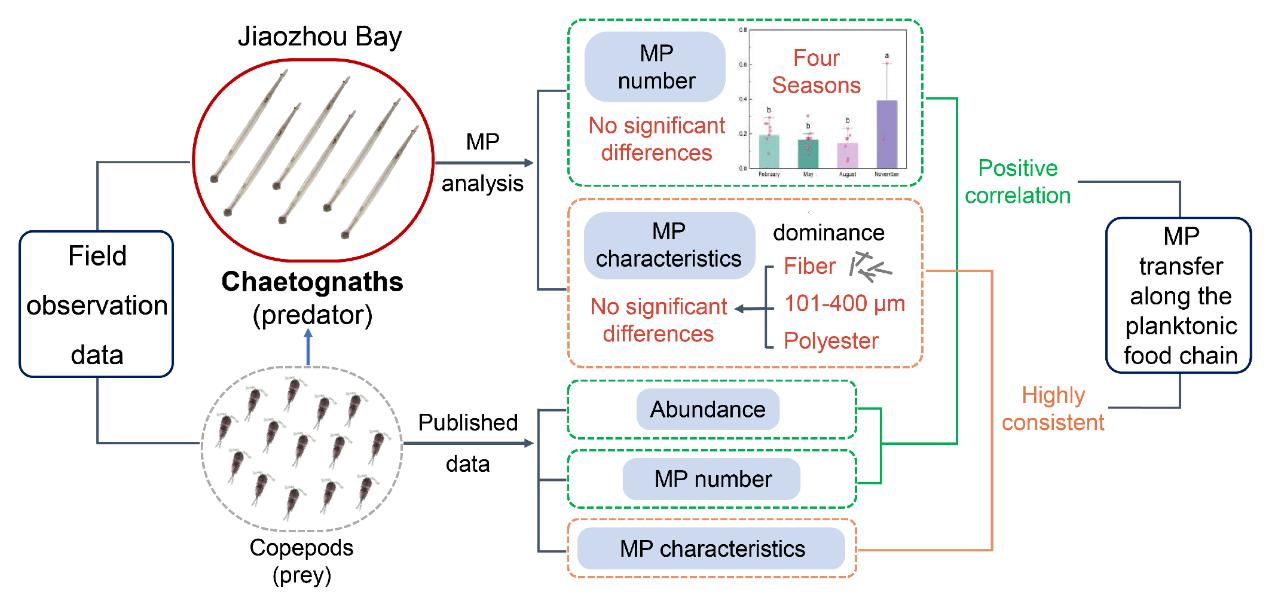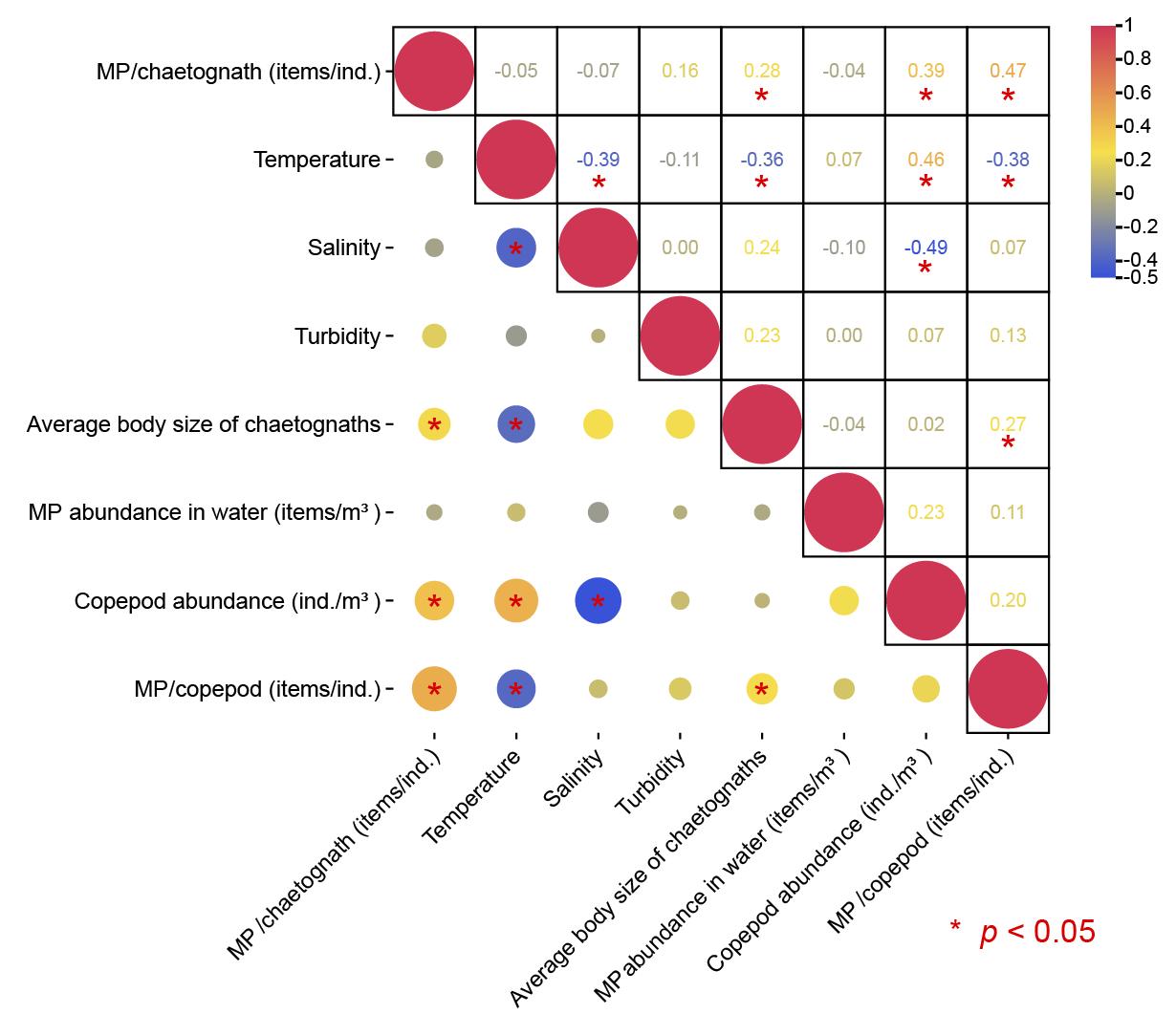Field Observations Reveal Microplastic Transfer in Marine Planktonic Food Chains
Microplastics widely distributed in the ocean are readily ingested by marine organisms, particularly zooplankton with food particles similar in size to microplastics. Chaetognaths, typical carnivorous zooplankton in the ocean, primarily feed on copepods and play a crucial role in linking secondary producers (such as copepods) to higher trophic level organisms within the food chain.
Recently, the research team led by Prof. SUN Xiaoxia from the Jiaozhou Bay Station at the Institute of Oceanology of the Chinese Academy of Sciences (IOCAS), conducted a pioneering study on the seasonal characteristics and risks of microplastic ingestion by chaetognaths in Jiaozhou Bay, based on field observation data. Researchers also assessed the impact of copepods, the primary prey of chaetognaths, on microplastic ingestion by chaetognaths. This study is among the first to provide field evidence of microplastic transfer along marine planktonic food chains.
The study was published in Journal of Hazardous Materials on Aug. 15.
Results indicated that there was no seasonal variation in microplastic ingestion by chaetognaths. The Pollution Load Index (PLI) of microplastics in chaetognaths was relatively low; however, both the Polymeric Hazard Index (PHI) and Potential Ecological Risk Index (PERI) were relatively high. Further comparison between chaetognaths and copepods revealed that the number of microplastics in chaetognaths was positively correlated with copepod abundance and the number of microplastics in copepods.
"The microplastics ingested by chaetognaths were found to be highly similar to those in copepods, predominantly fiberous in shape, 101-400 μm in size and polyester in polymer type," said MENG Liujiang, first author of the study.
Additionally, long-term exposure and ingestion of microplastics by higher trophic level organisms may lead to the continuous accumulation of microplastics within their bodies. The calculation of the biomagnification factor revealed that the higher individual-level accumulation of microplastics in chaetognaths in the copepod–chaetognath food chain indicated a potential risk of biomagnification.
"Our work provides critical field evidence for the transfer of microplastics through marine planktonic food chains, laying an important foundation for future research on the fate of microplastics in the ocean and their potential ecological risks," said Prof. SUN, the corresponding author.

Fig. 1 Field evidence of microplastic transfer along the planktonic food chain (copepods–chaetognaths).

Fig. 2 Correlation analysis of the number of microplastics in chaetognaths with marine environmental factors, copepod abundance and the number of microplastics in copepods.
Liujiang Meng, Shan Zheng, Yongfang Zhao, Tao Liu, Junhua Liang, Mingliang Zhu, Xiaoxia Sun*. (2024). Seasonal microplastic ingestion by carnivorous chaetognaths in Jiaozhou Bay, China: Field evidence revealing microplastic trophic transfer. Journal of Hazardous Materials, 478, 135532.